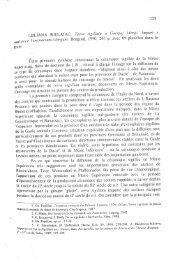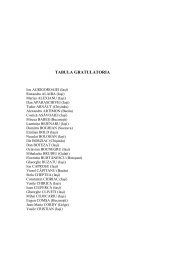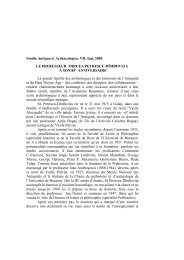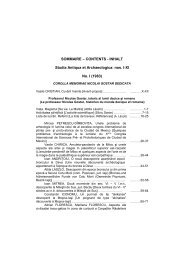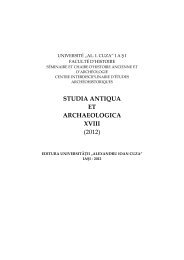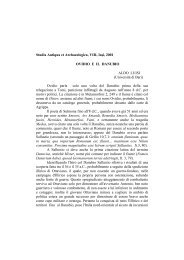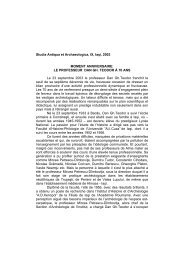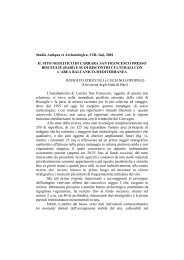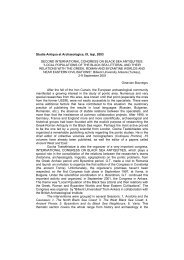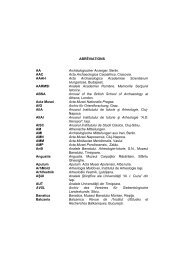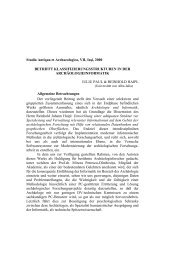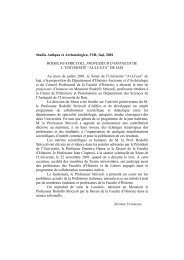VALERIU SÎRBU, Arheologia funerară şi sacrificiile: o terminolo
VALERIU SÎRBU, Arheologia funerară şi sacrificiile: o terminolo
VALERIU SÎRBU, Arheologia funerară şi sacrificiile: o terminolo
Create successful ePaper yourself
Turn your PDF publications into a flip-book with our unique Google optimized e-Paper software.
208 COMPTES-RENDUS<br />
George Bodi<br />
MĂDĂLIN CORNEL VĂLEANU, Omul <strong>şi</strong> mediul natural în neoeneoliticul<br />
din Moldova [Man and environment in the Neolithic in<br />
Moldova (north-east of Romania)], Ia<strong>şi</strong>, Editura Helios, 2003, 287 p.<br />
+12 pl.; Aşezări neo-enolitice din Moldova [Neolithic sites from<br />
Moldova (north-east of Romania)], Ia<strong>şi</strong>, Editura Helios, 2003, 233 p.<br />
The two books published by M. C. Văleanu represents, in fact, his<br />
doctoral dissertation (coordonated by Mircea Petrescu-Dîmboviţa). The<br />
two volumes were published in the same year, with the help of Foundation<br />
„Cucuteni for the third Millenium” (Bucharest) and Acremis Society of Ia<strong>şi</strong>.<br />
The first book was designed as an original contribution, using<br />
interdisciplinary research, in an attempt to corroborate the archeological<br />
data with ones provided by the natural science; the data processing was<br />
made using statistic methods. From the foreword, the author declares his<br />
intentions to study the ways in which the human communities from Neo-<br />
Aeneolithic used the natural environment, and to offer an image of man’s<br />
interaction with surrounding environment.<br />
The great effort made by the author to elaborate this vast work is<br />
considerable but the results are not always germane.<br />
The book is structured in six chapters. The first chapter is<br />
concerning with the research history, taking an inventory of the most<br />
representative archeological discoveries, pioneer interdisciplinary<br />
researches, as well as a few papers which submit some interdisciplinary<br />
methods of archeological investigation.<br />
The second chapter (Natural environment) offers geographical<br />
information about the studied area. Thus, the circumscription of the region<br />
is made according to hydrographic basins, and the characteristics of the<br />
natural environment according from geologically and physicalgeographically<br />
point of view is drawn. Nonetheless, the notion of natural<br />
environment is far too large, so we believe that a more detailed approach<br />
to biogeographically problems should have been salutary. The information<br />
concerning each relief unit are abundant, betraying the author’s<br />
geographical background, still being sometimes, irrelevant to the purposes<br />
of the book. This bulk of information is taken, most of it actually, from the<br />
Geographical Treaty of Romania, as the author underlines, but only a few<br />
bibliographical notes have been made.<br />
The third chapter deals with working methodology. In a few<br />
phrases is sketched the archeological <strong>terminolo</strong>gy used, which is based<br />
on the chronological frame of the Neolithic and Aeneolithic cultures




